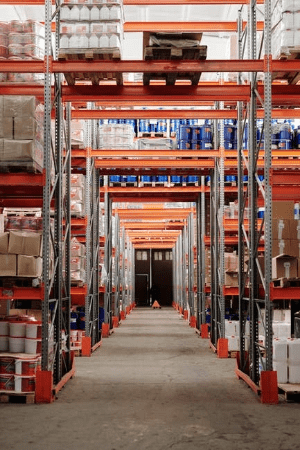
Pallet rack is a versatile material handling system specifically designed to hold materials on pallets in multiple vertical positions. Although there are several types of pallet rack, all forms allow for the efficient storage of palletised materials on vertical shelves with multiple levels. The vertical storage arrangement of a pallet rack is very conducive to the orderly placement of goods into various sections of stock. This method of storage also minimises the risk of stacking if any of the vertical shelves collapse. This method also minimises damage to the goods stored within, as the chances of things falling off the racks are reduced. For more information, click here.
When you think about warehouse operations, the capacity of the goods being moved from one section of the warehouse to another is of paramount importance. In a busy production environment, a large amount of inventory and supplies are stacked on pallet racks. The larger the amount of inventory, the more space is required inside the warehouse to properly handle these supplies. If you are unable to meet the requirements for storing this much stock, then you run the risk of your goods becoming misplaced or damaged. Get and learn more information now.
The efficiency of a pallet rack allows for more space to be taken up by the goods. Aisles are rendered wider, meaning less warehousing costs and less time spent searching for items. An aisles layout also means that the warehouse becomes safer, as it becomes harder for a dangerous object to fall down and hit a person. All the employees in the warehouse are able to move around safely, thanks to the efficient use of space.
As opposed to traditional fixed storage racks, most pallet racks are constructed using either roll form or drop down storage racks. The roll form pallet rack uses a forklift system to transport the goods onto the racks, whilst the drop down types are installed at the desired location. The advantage of using these methods of storage is that the forks lift up the pallets without touching the goods themselves. However, both systems result in the same end result: a more efficient use of space, and an increase in product turnover.
The disadvantages of using these methods are that forklifts are not always available, and there can be problems with the positioning of goods on the racks. In some cases, gravity is a more effective storage solution. There are two types of structural racking components: gravity and push-back racking. Gravity system involves forklift trucks being placed on the pallet racks, whilst push-back racking requires extra support at the bottom of the pallet racks. Gravity racks have been found to be very effective, especially if they are stacked on top of each other. Seek more info at https://en.wikipedia.org/wiki/Pallet_racking.
Push-back racks are installed on top of a pallet rack beam, which is then firmly held in place by steel ribs or solid bolted pieces. These racks can also be self-supporting, but they commonly use a cross-beam technique, where the beams are positioned six inches apart from each other and are supported by two-inch galvanized nuts, or half-inch galvanized nails. Galvanized bolts have excellent rust and corrosion resistance, but the two-inch spacing is often a problem, because it is difficult to place two-inch galvanized bolts in six-inch spaces. Because bolts are so big, they often get "nudged" when they are pushed down into their hole in the pallet rack. Nudged bolts can cause damage to the equipment. The most common way to combat this problem is to make sure that the bolts are spaced correctly, or to place bolts that have been specially drilled so that they don't become nudged.